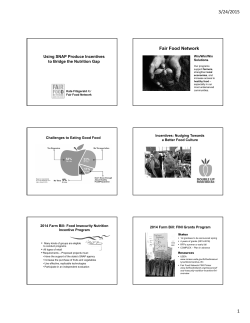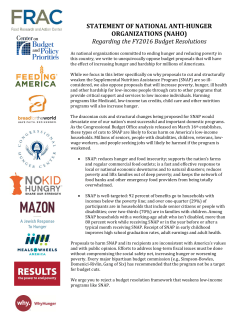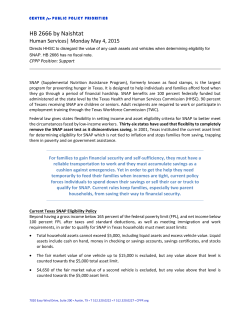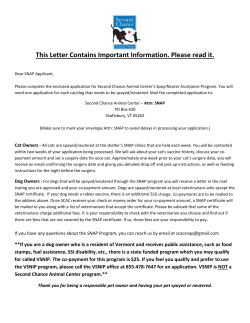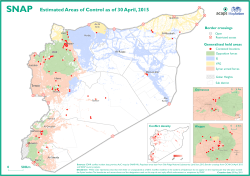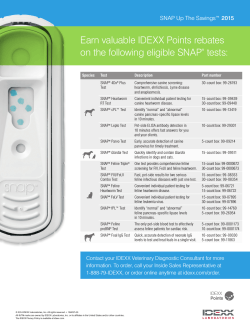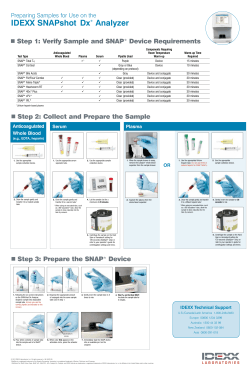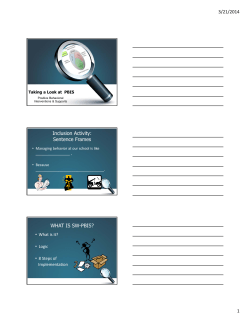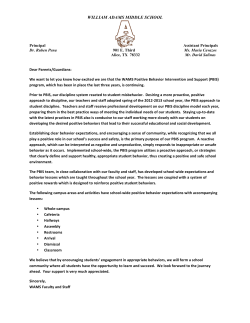
What is a Continuum of School Wide Instruction & Positive... When a school implements SWPBS, also referred to as Positive... Support (PBIS), they organize their evidence-based behavioral practices and systems...
What is a Continuum of School Wide Instruction & Positive Behavioral Support? When a school implements SWPBS, also referred to as Positive Behavioral Intervention & Support (PBIS), they organize their evidence-based behavioral practices and systems into an integrated collection or continuum in which students experience supports based on their behavioral responsiveness to intervention. A three-tiered prevention logic requires that all students receive supports at the universal or primary tier. If the behavior of some students is not responsive, more intensive behavioral supports are provided, in the form of a group contingency (selected or secondary tier) or a highly individualized plan (intensive or tertiary tier). Additional information can be found at www.pbis.org At FDES, our PBIS Acronym is SNAP. Show Respect: Respect is treating others as you would like to be treated. It is being considerate of other people’s feelings. It means recognizing the value of people, property, and yourself. Learning occurs when we show respect of each other Notice Surroundings: Safety first! We will behave so that our actions don’t cause harm to ourselves or others. Learning happens when we are not afraid or in danger. Act Responsibly: Be a responsible student. We will do our duty to do our job correctly and on time. We are responsible for our actions and choices we make every day. It is doing our best and never blaming others for our mistakes. Personal Best: Working hard to succeed! Be prepared to learn by having supplies and materials ready, using listening ears, trying your best, showing effort to have a great day and be successful. What does PBIS look like at Fort Dorchester Elementary School? PBIS approaches student behavior as a set of skills that need to be taught. Each year at Fort Dorchester Elementary, teachers spend time at the beginning of the school year teaching students the SNAP expectations in the classrooms, hallways, bathrooms, playground, cafeteria and busses using student friendly lesson plans, modeling, and role playing around the school building. Throughout the school year, classes have booster review sessions of the expectations. The SNAP expectations are posted throughout the school building so teachers can review them throughout the school when needed. Students can earn SNAP Shares for displaying SNAP expectations. They can redeem these for items on the SNAP cart or school activities such as playing games, popcorn or popsicles at lunch, a picnic with their class, lunch with someone special, shadowing the principal, a pajama or hat day, extra recess, or extra computer time just to name a few options. These opportunities are scheduled at specific times of the school year so students can cash in their SNAP Shares. Students have the opportunity to earn AT LEAST one SNAP share daily. Once students have 5 individual SNAP shares, they turn them into their teacher who hole punches their Gator Debit Card for the amount of SNAP shares turned in. They use their Gator Debit Cards to purchase items or activities. In the classrooms, teachers have classroom management systems to help their students follow the SNAP expectations. These management plans will look different from classroom to classroom, but are in place to help kids learn and to reteach the SNAP expectations. If you have a question about the classroom management system in your child’s classroom, his/her teacher will be glad to explain how it relates to the SNAP expectations.
© Copyright 2025
